Part 1: Exploring the World of Basmati Rice
Basmati rice is not just another grain; it’s a culinary treasure cherished across the globe for its unique characteristics.
What is Basmati Rice?
Basmati rice is a variety of long-grain rice, originating from the Indian subcontinent. Known for its fragrant aroma and slender, elongated grains, basmati rice has been a part of South Asian cuisines for centuries. It’s celebrated for its ability to remain separate and fluffy after cooking, making it a preferred choice for a variety of dishes.
The Unique Qualities of Basmati Rice
What sets basmati rice apart is its distinctive nutty flavor and floral aroma, which can be attributed to the presence of a compound called 2-acetyl-1-pyrroline. The grains are also longer than typical white rice and expand more during cooking, offering a light and fluffy texture that’s ideal for absorbing flavors from spices and herbs.
Part 2: Preparing Basmati Rice for Cooking
Proper preparation is key to unlocking the full potential of basmati rice. Let’s explore the initial steps to ensure your rice is ready for cooking.
To Rinse or Not to Rinse
Rinsing basmati rice before cooking can remove excess starch, preventing the grains from sticking together. Gently wash the rice under cold water until the water runs clear. This step is especially important if you’re aiming for distinct, separate grains in your final dish.
Soaking Basmati Rice: Is It Necessary?
Soaking basmati rice before cooking is a debated topic. While not always necessary, soaking for 30 minutes can shorten the cooking time and contribute to a more uniform texture. Soaked rice grains expand more evenly, resulting in a fluffier outcome. However, if you’re pressed for time, you can skip this step without significantly compromising the quality of your rice.
Part 3: Mastering the Cooking of Basmati Rice
Cooking basmati rice to perfection involves choosing the right method. Let’s explore the most effective techniques.
The Absorption Method
The absorption method is a popular way to cook basmati rice. Here’s how it’s done:
- Combine rinsed (and soaked, if preferred) basmati rice with water in a saucepan. The correct rice to water ratio is crucial – typically, it’s 1 cup of rice to 1.5 cups of water.
- Bring the mixture to a simmer, then reduce the heat to low. Cover the saucepan with a tight-fitting lid to prevent steam from escaping.
- Cook until the water is completely absorbed and the rice is tender – usually about 12-15 minutes.
- Remove from heat and let it sit, covered, for 5-10 minutes. This allows the rice to steam further and become fluffy.
The Pilaf Method
The pilaf method involves sautéing the rice first in a little bit of oil or butter before adding water. This technique imparts a nuttier flavor to the rice and helps keep the grains separate.
- Heat oil or butter in a saucepan. Add the rice and stir to coat the grains.
- Pour in the water (the same 1:1.5 rice-to-water ratio applies) and bring to a boil.
- Reduce the heat, cover, and simmer until the water is absorbed.
- Let the rice rest off the heat for a few minutes before fluffing with a fork.
Part 4: Expert Tips for Fluffy and Fragrant Basmati Rice
Achieving the perfect batch of basmati rice is an art. Here are some expert tips to help you master it.
The Right Water-to-Rice Ratio
One of the most crucial aspects of cooking basmati rice is getting the water-to-rice ratio correct. Generally, a ratio of 1 cup rice to 1.5 cups water works well. This ratio ensures that the rice has enough moisture to cook without becoming mushy or overly sticky.
Cooking Times and Temperatures
Cooking times can vary slightly depending on the method used. For the absorption method, once the rice is simmering, it typically takes about 12-15 minutes for the water to be fully absorbed. It’s important to cook the rice on a low simmer to prevent it from burning at the bottom. After cooking, letting the rice sit off the heat for about 10 minutes allows it to steam and become fluffier.
Part 5: Avoiding Common Pitfalls in Cooking Basmati Rice
Even with a simple ingredient like basmati rice, there are common mistakes that can affect the quality of your dish. Let’s address these pitfalls and how to avoid them.
Overcooking and Undercooking
Part 5: Avoiding Common Pitfalls in Cooking Basmati Rice
Cooking basmati rice can sometimes be tricky, but being aware of common mistakes can help you avoid them for perfect results every time.
Overcooking and Undercooking
The fine line between overcooking and undercooking basmati rice is often where many go wrong. Overcooked rice turns mushy, losing its distinct texture, while undercooked rice can be hard and chewy. To avoid these issues, stick to the recommended cooking times and use a timer. Also, resist the urge to peek or stir the rice while it’s cooking, as this can release steam and disrupt the cooking process.
Dealing with Stickiness or Dryness
If your basmati rice turns out sticky, it’s often due to excess starch. Rinsing the rice thoroughly before cooking can help eliminate this problem. On the other hand, dryness usually results from insufficient water or cooking at too high a temperature. Ensure you’re using the correct water-to-rice ratio and maintain a gentle simmer.
Part 6: Serving and Storing
Once your basmati rice is perfectly cooked, knowing how to serve and store it is essential for maintaining its quality and flavor.
Best Ways to Serve Basmati Rice
Basmati rice is incredibly versatile and can be served in numerous ways:
- As a side dish, it pairs beautifully with a variety of cuisines, particularly Indian and Middle Eastern dishes.
- Use it as a base for flavorful rice bowls, topped with vegetables, proteins, and sauces.
- It’s also perfect for making fried rice, where its fluffy texture and ability to remain separate shines.
Storage and Reheating Tips
For storage:
- Allow the rice to cool completely before storing it to prevent bacterial growth.
- Store it in an airtight container in the refrigerator for up to 5 days.
For reheating:
- Add a small amount of water to the rice before reheating to restore moisture.
- Reheat it in the microwave, covered, stirring occasionally, or in a saucepan over low heat.
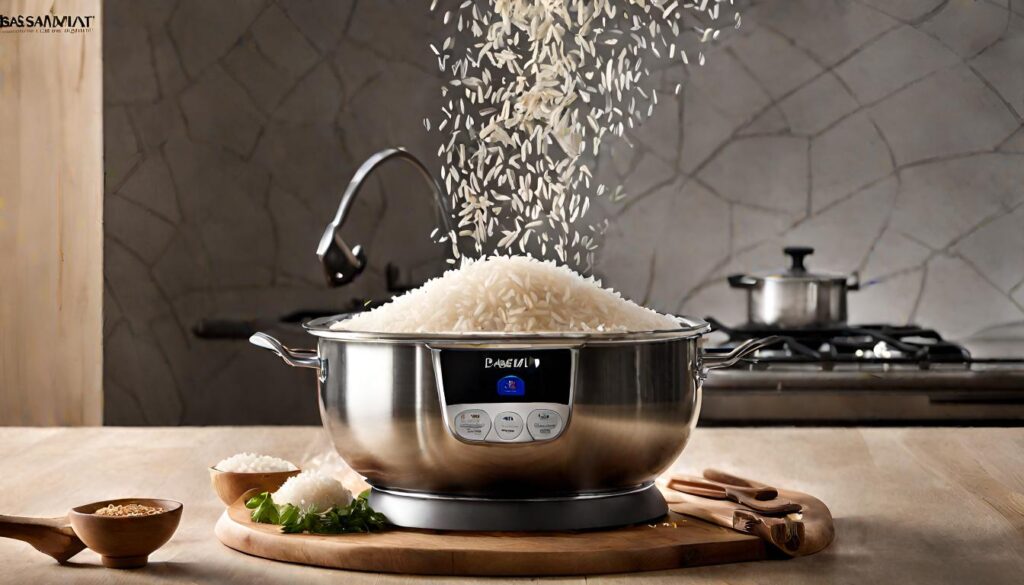
Part 7: Frequently Asked Questions
In this concluding section, we address some of the most common questions about cooking basmati rice, offering insights to enhance your culinary experience.
Common Queries and Expert Answers
Q: How much water do I need for cooking basmati rice?
A: The ideal ratio for cooking basmati rice is 1 cup of rice to 1.5 cups of water. This ratio ensures the rice cooks perfectly, becoming fluffy without being too wet or dry.
read more: “Rice Noodles Recipes“
Q: Can I cook basmati rice in a rice cooker?
A: Yes, basmati rice can be cooked in a rice cooker. Use the same water-to-rice ratio. The rice cooker will handle the cooking time and temperature, making the process even more convenient.
“Unveiling the Pastina Recipes and Cooking Tips” it provide you with additional insights into cooking grains.
Q: Is it necessary to soak basmati rice before cooking?
A: Soaking basmati rice before cooking is not mandatory, but it can help in achieving a more uniform texture. Soaking for about 30 minutes is sufficient if you choose to do so.
“Effects of Soaking on the Volatile Compounds, Textural Property, Phytochemical Contents, and Antioxidant Capacity of Brown Rice“. This link provides scientific insights into the benefits of soaking rice, which is directly relevant to the question.
Gluten-Free Bagels: A Comprehensive Guide to Recipes & Tips” if you interested in other cooking preparations and tips.
Q: How can I prevent my basmati rice from becoming sticky?
A: To prevent stickiness, rinse the rice thoroughly under cold water until the water runs clear. This removes excess starch from the surface of the grains.
Resistant starch formation in rice: Genetic regulation and beyond“. This link provides a detailed scientific explanation of starch in rice, which is relevant to understanding why rice becomes sticky.
Q: What’s the best way to reheat leftover basmati rice?
A: To reheat, sprinkle some water over the rice to add moisture and prevent drying out. You can then reheat it in the microwave, covered, or in a saucepan over low heat.
“Leftovers and Food Safety“. This link offers authoritative information on safe food reheating practices, which is useful for you concerned about food safety.
With these FAQs, we wrap up our comprehensive guide on how to cook basmati rice. Whether you’re a seasoned cook or new to the kitchen, these tips and techniques will help you master the art of cooking this aromatic and versatile grain, making it a perfect addition to a wide range of dishes.


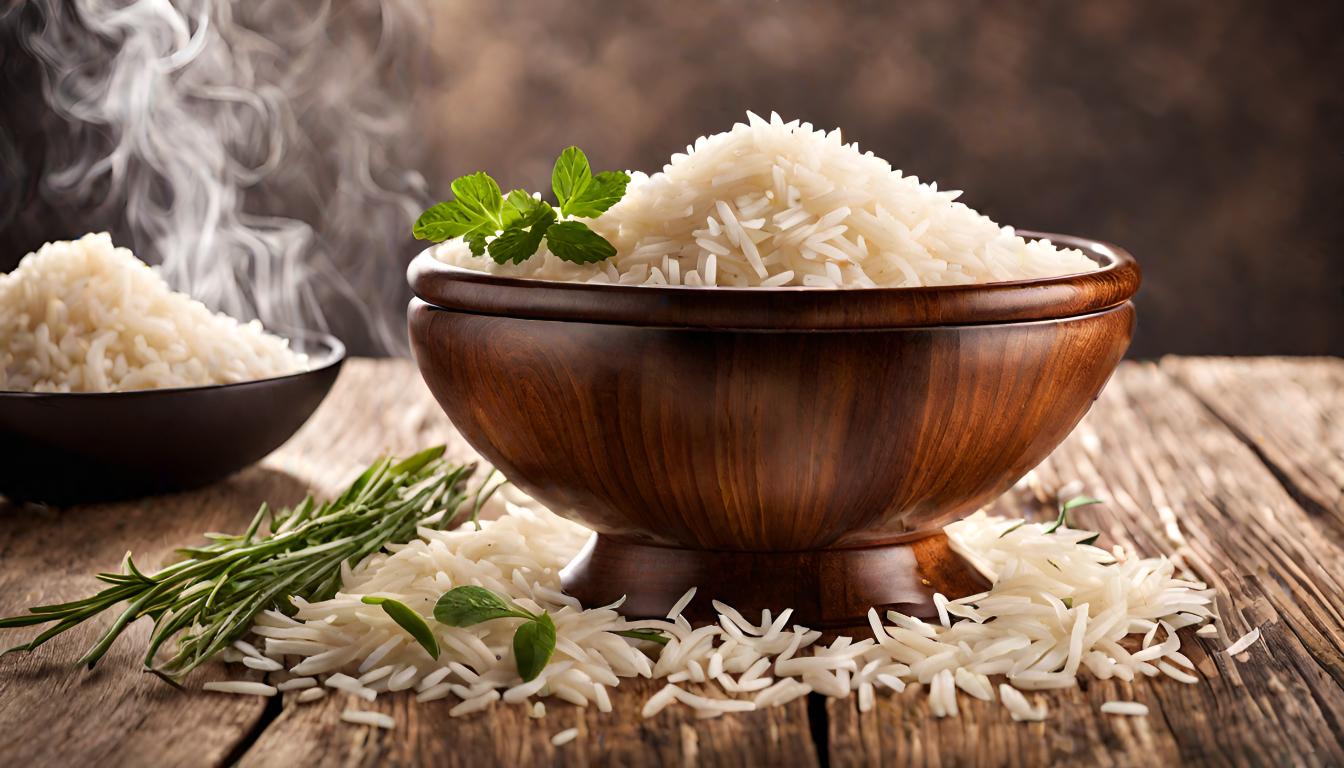
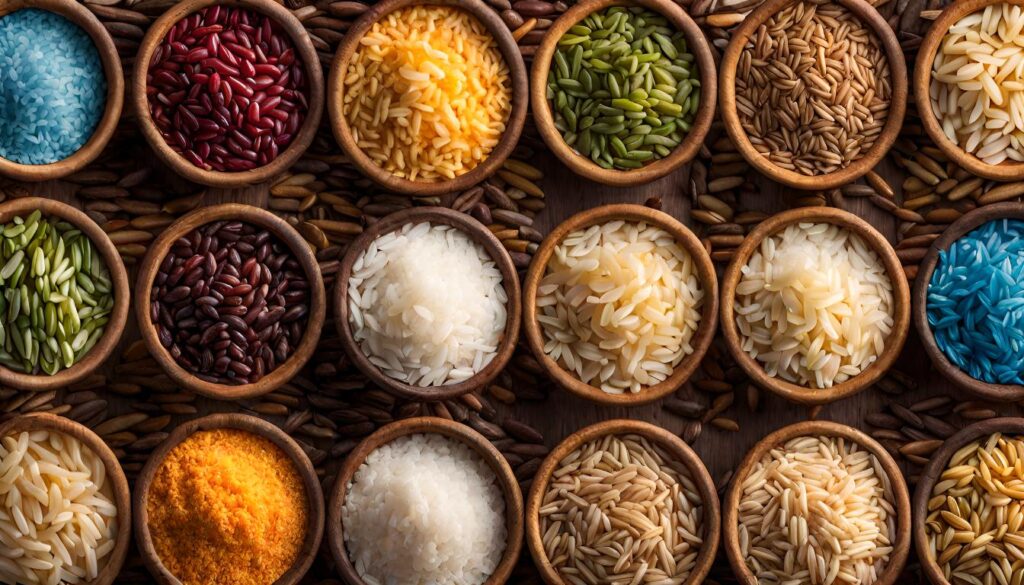
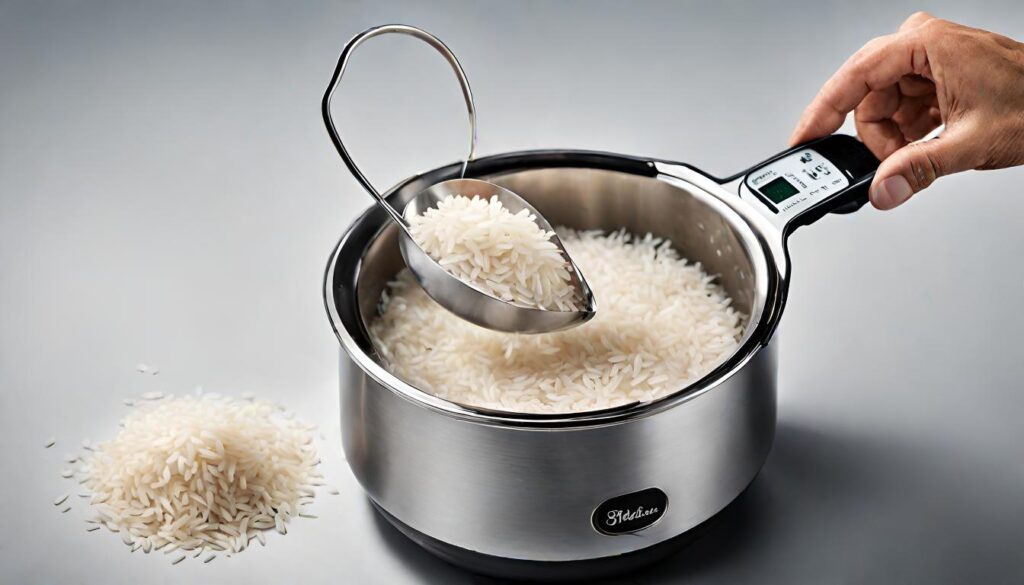

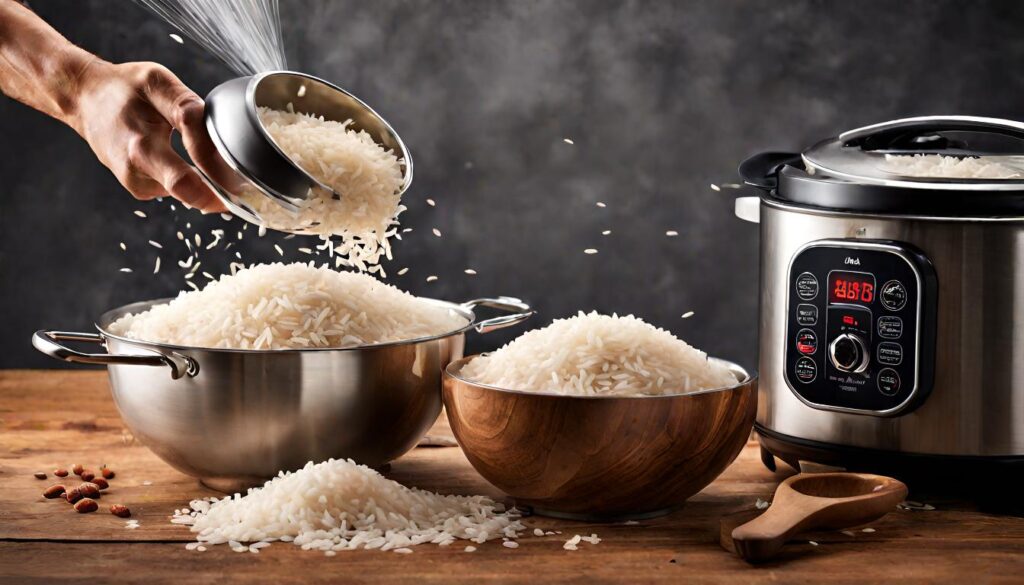



Comments are closed.